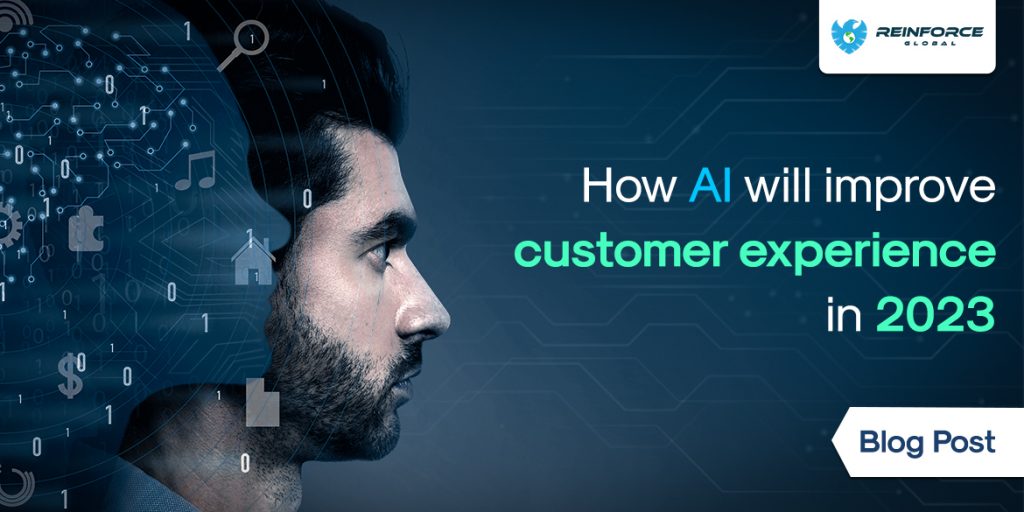Whether it is an online website or a phone app, customer experience is the primary element that transforms the stature of a business. It doesn’t matter how good the user interface is; if the functioning and navigation of the website are not good, users will not entertain your business.
As per stats, 42% of the customers are willing to pay more if offered a friendly customer experience. Now, with the speed at which technology is accelerating, it can be tough to keep up with the competition all the time. Hence, the use of top-end technologies like AI, ML, Blockchain, and many others has increased.
Out of these, artificial intelligence has gained massive traction in the past decade. It is being used in almost every industry today. But how can it affect customer experience? How can AI for customer experience be beneficial? Let s read ahead and find out in this article!
What is AI for Customer Experience?
If we talk about AI first, AI is a technology that enables machines to do human-like tasks easily. Though it cannot mimic all human tasks, it can surely ease some of the tasks for humans.
Companies today use artificial intelligence to deliver better solutions to their clients and customers. How? Well, customer data is the centerpiece of this. AI helps firms to devise better and more valuable insights from the data gathered from various sources. The data is huge heaps, so it can take time to analyze for a human. Hence, artificial intelligence comes into the picture.
An excellent example of AI for customer experience is personalization. When a user interacts with a website, the website can keep track of pages the user has visited and the user of the product has searched for. This data is fed to a machine learning algorithm (part of AI) that finds a pattern in them and, based on them, suggests choices to target users with personalized products. Hence, enhancing customer experience.
As per stats, AI will power 95% of customer interactions. It shows that if you are not packed and jacked with AI applications, you may be crushed by your competitors.
How are AI Applications ready to Boost Customer Experience in 2023?
So, when it comes to customer experience backed by AI, there are various ways AI can improve and enhance it. Here are some of them!
AI Chatbots
If you have visited websites dedicated to the app or website development, you will likely see a chatbox at the bottom right or left of the page. Not only development but some shopping and entertainment sites also have these chatboxes.
Now, these chatboxes are controlled by chatbots at the backend. They can help users with some basic queries related to the subject. But, with the collaboration of AI and chatbots, it can be enhanced further to improve customer service and experience.
Though AI-backed chatbots are not ideal for all types of tasks, they can surely be used for some basic customer services like invoice management, order details, and account management. Today, some chatbots can even handle refunds for businesses. The chatbot built within the app can handle simple refunds if the user complains about bad food quality or missing items.
As 23% of customer service companies are currently using chatbots and 68% of the users enjoy the speed at which chatbot answers, they are surefire to improve customer experience.
Hyper-Personalization
How do you see only those ads on Google that interest you? It is because of personalization. Personalization is all about keeping track of what you are viewing on the web or a specific website. Websites keep track of what you are viewing on a website and target you with suggestions and ads later on.
With the help of artificial intelligence, it can be further enhanced as business owners can scan more data in less time. AI applications can help analyze heaps of data to consider previous customer preferences, conversation history, and other critical information to provide valuable suggestions. This can save a lot of time people spend searching for the required product or service.
If you need an example of AI and Hyper-Personalization, here is one!
Naked Wine is an online wine retailer that uses Hyper personalization to provide wine recommendations to its users. They collect user reviews and feedback and perform predictive analysis to offer wine suggestions that the users may like.
Real-time Decisioning and Predictive Behavior Analysis
Real-time decisioning deals with analyzing real-time interactions of users to provide them with suggestions and recommendations. There are millions of users interacting with a website at a time. Hence, manually analyzing data related to each interaction can be tough. This is where AI comes into the picture.
Artificial intelligence combined with machine learning is the perfect solution for this. Businesses can capture real-time data while the user interacts with the website and provide the required results. For example, if the user has just skipped an expensive product, you can offer them more cost-effective choices.
On top of that, predictive behavior analysis can also be performed on the data. Predictive behavior analysis is about modeling the data to find patterns and routines to target users with valuable suggestions. The best thing about predictive behavior analysis is knowing what to present to the user and when to present it.
Conclusion
So, if you are a business trying to make it to the top in the competitive market, you need to leverage the power of AI for customer experience. You see, customer experience needs to be super smooth and immersive. Hence, you need to keep it focused and qualitative. With a variety of methods out there, it can become tough. Therefore, artificial intelligence can be useful. It can keep your business always in the eyes of your prospects while you can work on more important things.
If you need any help with AI applications related to customer experience, you can rely on Reinforce Global. The custom software development firm in the US has adept professionals and years of experience.

